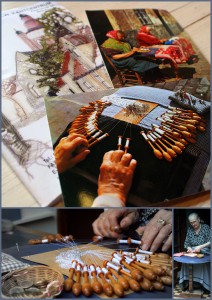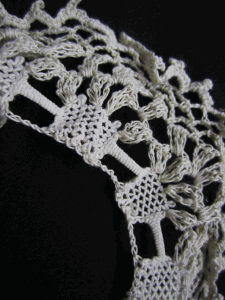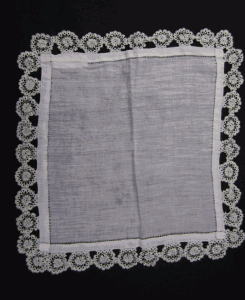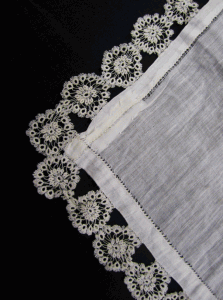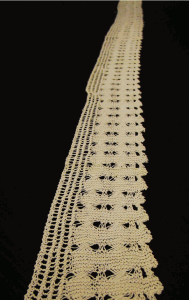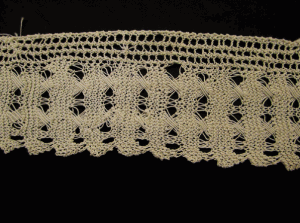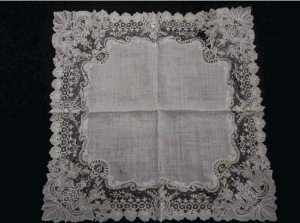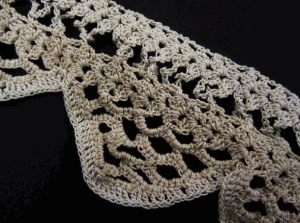- Lacework is thought to have been derived from fishermen’s nets. A prehistoric piece of netting can be seen in the National Museum in Copenhagen. Lacework was derived from a technique of knotting which had a function, and later it developed its ornamental purposes. The word lace is derived from the Latin word lacques, meaning loop or snare. The term lace extends to any openwork fabric that is created by looping, twisting, or knotting threads either by hand or machine.
Before it was possible to machine produce lace, it was all made by hand. Women would create lace to decorate a variety of clothing including wedding dresses. Lace has been used on handkerchiefs, collars, sleeves, undergarments, and around the house.
In the early days of lace; silk, flax, metal threads or even human hair were widely used. Lace can be made of any thread which is thin enough, strong enough and doesn’t stretch. Colors were usually white or cream and sometimes black. But by dying the thread used to create lace, you can create colored pieces. Trimmings of silk or gold thread presented problems since they were hard to clean. The white linen thread became popular in the 16th century. Much of the linen thread comes from Great Britain and Northern Ireland, because the moist climate produces the best flax resulting in the best linen. Bleaching gives linen a soft shade rather than a stark white. Linen prices grew and were eventually replaced with cheap cotton threads.
There are many different techniques to create lacework, each resulting in a unique object. The different techniques are:
Bobbin Lace
Needle Made Lace
Tulle Lace
Cutwork
Tape Lace
Knotted Lace
Crocheted Lace
Knitted Lace
Machine-made
Guipure
Each technique requires a series of different knots and loops. There are:
Raised knots Interlaced loops
Flat knots Symmetrical double knots
Cross knots Divergent knot
Weavers’ knots Reef Knot
Chinese knots Lattice net, or half stitch
Double knots Linen stitch
Woven platis Symmetrical double knots
If you wish to see lace making performed please follow the video link to Flickr. Video courtesy of Bill McNeal (whiteknuckled).
